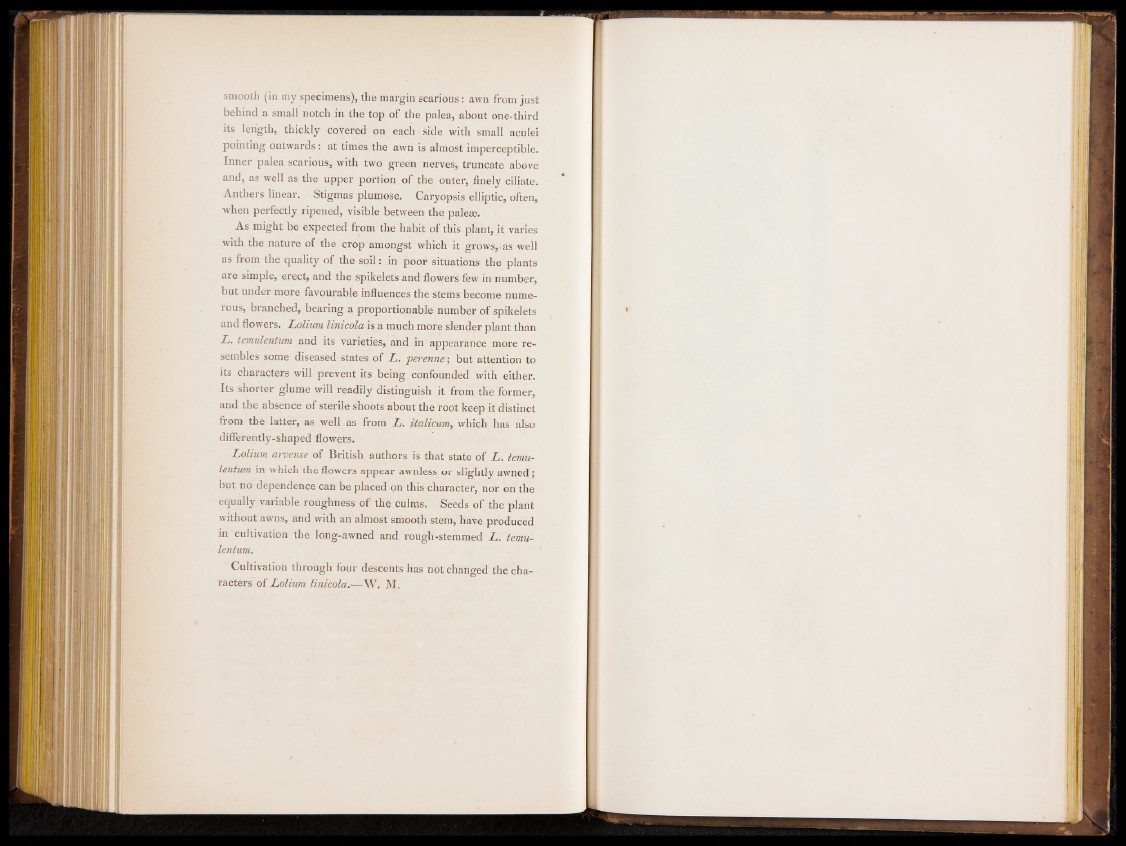
smooth (in my specimens), the margin scarious: awn from just
behind a small notch in the top of the palea, about one-third
its length, thickly covered on each side with small aculei
pointing outwards: at times the awn is almost imperceptible.
Inner palea scarious, with two green nerves, truncate above
and, as well as the upper portion of the outer, finely ciliate.
Anthers linear. Stigmas plumose. Caryopsis elliptic, often,
when perfectly ripened, visible between the palese.
As might be expected from the habit of this plant, it varies
with the nature of the crop amongst which it grows, as-well
as from the quality of the soil: in poor situations the plants
are simple, erect, and the spikelets and flowers few in number,
but under more favourable influences the stems become numerous,
branched, bearing a proportionable number of spikelets
and flowers. Lolium linicola is a much more slender plant than
L. temulentum and its varieties, and in appearance more resembles
some diseased states of L. perenne; but attention to
its characters will prevent its being confounded with either.
Its shorter glume will readily distinguish it from the former,
and the absence of sterile shoots about the root keep it distinct
from the latter, as well as from L. italicum, which has also
differently-shaped flowers.
Lolium arvense of British authors is that state of L. temulentum
in which the flowers appear awnless or slightly awned;
but no dependence can be placed on this character, nor on the
equally variable roughness of the culms. Seeds of the plant
without awns, and with an almost smooth stem, have produced
in cultivation the long-awned and rough-stemmed L. temulentum.
Cultivation through four descents has not changed the characters
of Lolium linicola.—W. M.